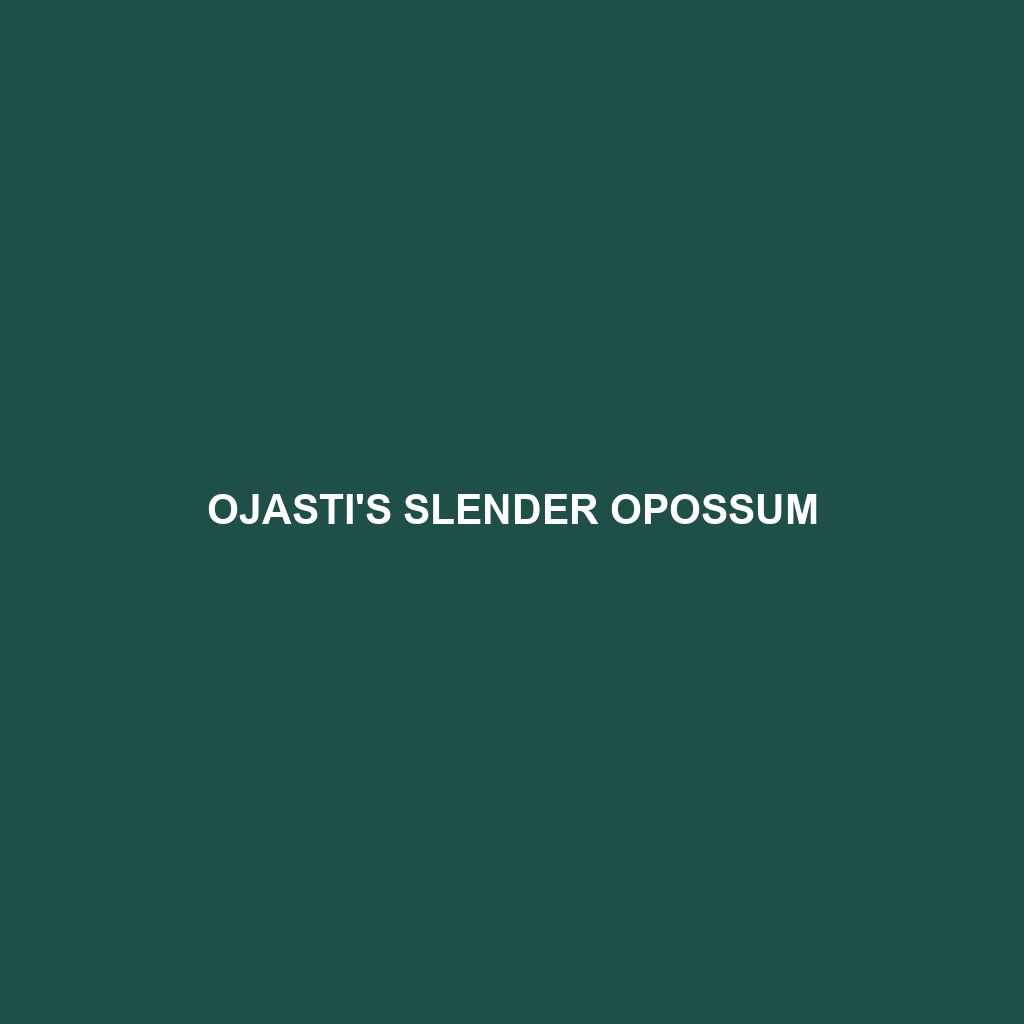Pantepui Slender Opossum: A Detailed Overview
The Pantepui Slender Opossum (Marmosops pakaraimae) is a small marsupial found primarily in the Pantepui region of South America. Known for its slender body, agile movements, and keen nocturnal habits, this elusive creature plays a vital role in the ecosystems of its mountainous rainforest habitat. Though not widely known, the Pantepui Slender Opossum is a fascinating species worth exploring for its unique adaptations and ecological importance.
Physical Characteristics
Size: This opossum measures approximately 15-20 cm (5.9-7.9 inches) in body length, with a tail that can be nearly as long, adding another 13-18 cm (5.1-7.1 inches).
Weight: It typically weighs between 20-40 grams (0.7-1.4 ounces).
Coloration: The Pantepui Slender Opossum displays a subtle color palette, with fur that ranges from light brown to grayish, often with a lighter underbelly. This coloration helps it blend into its forest environment.
Special Features: Notable for its large, dark eyes adapted for nocturnal vision, and a prehensile tail that aids in climbing and balance. It also has sharp claws and padded feet for adept tree-climbing.
Behaviors
Social Interactions: Generally solitary creatures, they come together primarily for mating purposes. Social interactions outside of breeding season are minimal.
Feeding Habits: The Pantepui Slender Opossum is an omnivore with a diet consisting of fruits, insects, small vertebrates, and occasionally nectar. Its opportunistic feeding habits help it thrive in a variable environment.
Ecological Roles: As both a predator and prey, this opossum helps control insect populations and disperses seeds through its fruit-eating habits, contributing to forest regeneration.
Habitats
Geographic Range: Native to the Pantepui region in the Guiana Highlands, spanning parts of Venezuela, Brazil, and Guyana.
Natural Habitat: Prefers moist, forested, and mountainous regions with dense vegetation. Often found in cloud forests and high-altitude rainforests.
Habitat Adaptations: Adapted to a life in the trees, with strong limbs and a prehensile tail for navigating the forest canopy. Its camouflaged fur and nocturnal habits protect it from predators.
Adaptations
Nocturnal Lifestyle: Large eyes and acute hearing aid in nighttime foraging and predator avoidance.
Prehensile Tail: Acts like a fifth limb, allowing for enhanced mobility and stability in the treetops.
Dental Adaptations: Teeth designed to handle a varied diet, from insect exoskeletons to fruit flesh.
Conservation Status
Current Status: The conservation status of the Pantepui Slender Opossum is not well-documented due to its elusive nature and the inaccessibility of its habitat. However, habitat loss and environmental changes pose potential threats.
Conservation Efforts: Protected areas within the Pantepui region help conserve their natural habitat. Continued research and environmental monitoring are necessary to ensure their survival.
Fascinating Fun Facts
Unique Reproduction: Like other marsupials, females carry and nurse their young in a pouch, which offers protection during the early stages of development.
Climatic Adaptations: The Pantepui region’s unique climate demands special adaptations, making this opossum resilient to varying temperature and humidity levels.
Secretive Nature: Their elusive behavior and remote habitat make them difficult to study, contributing to the mystery and allure surrounding this species.
The Pantepui Slender Opossum is a remarkable example of nature’s adaptability and the intricate balance within forest ecosystems. As we continue to uncover more about this enigmatic animal, it underscores the importance of conserving our planet’s diverse habitats.
